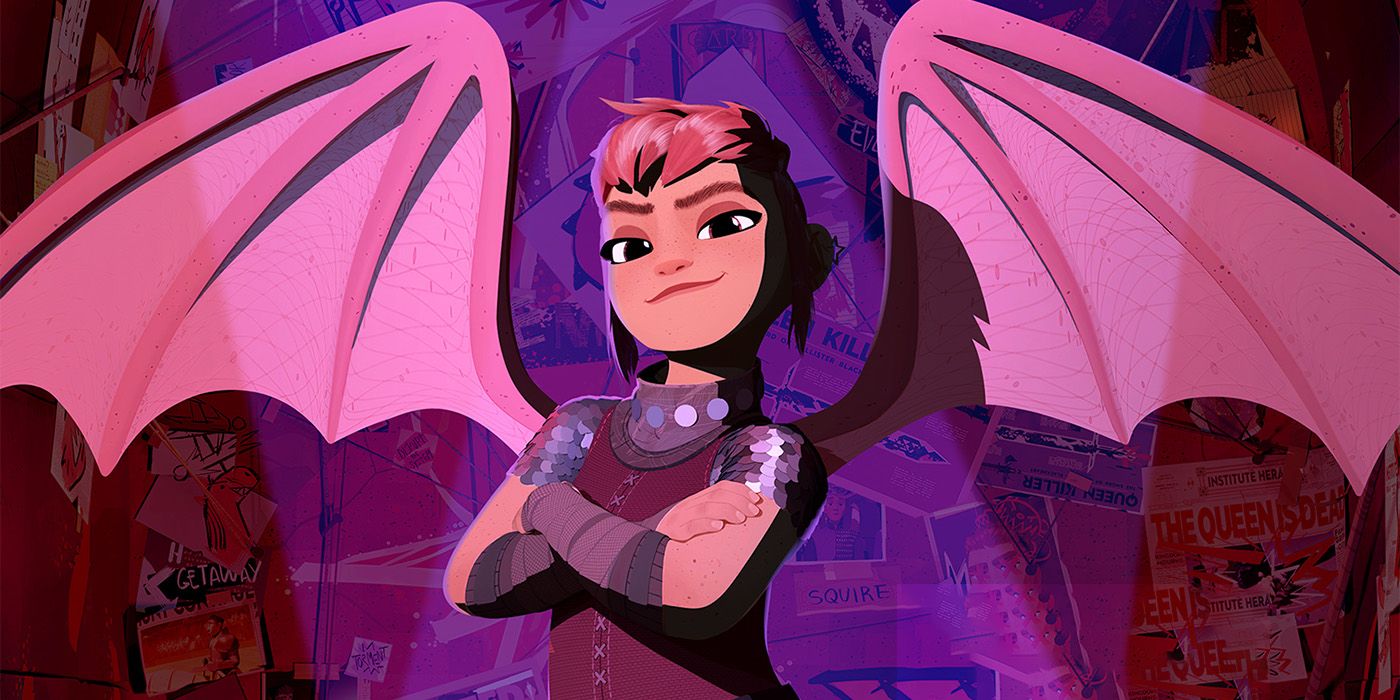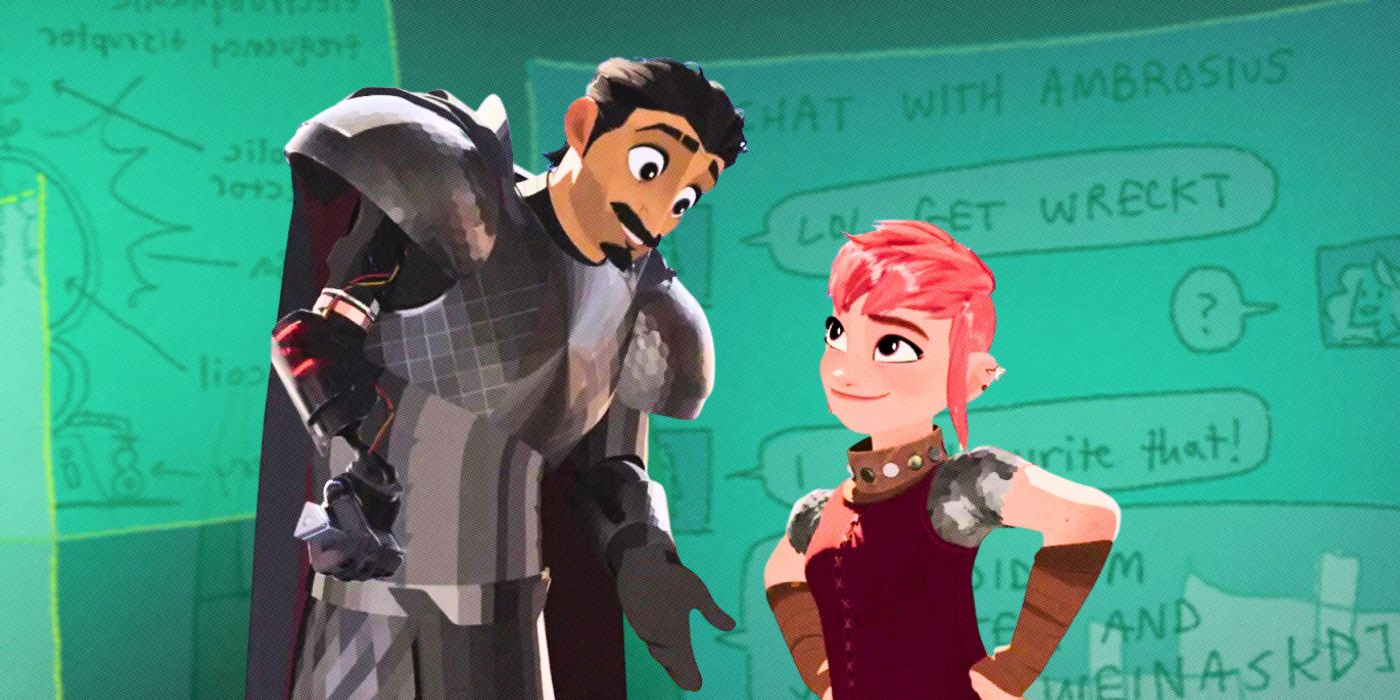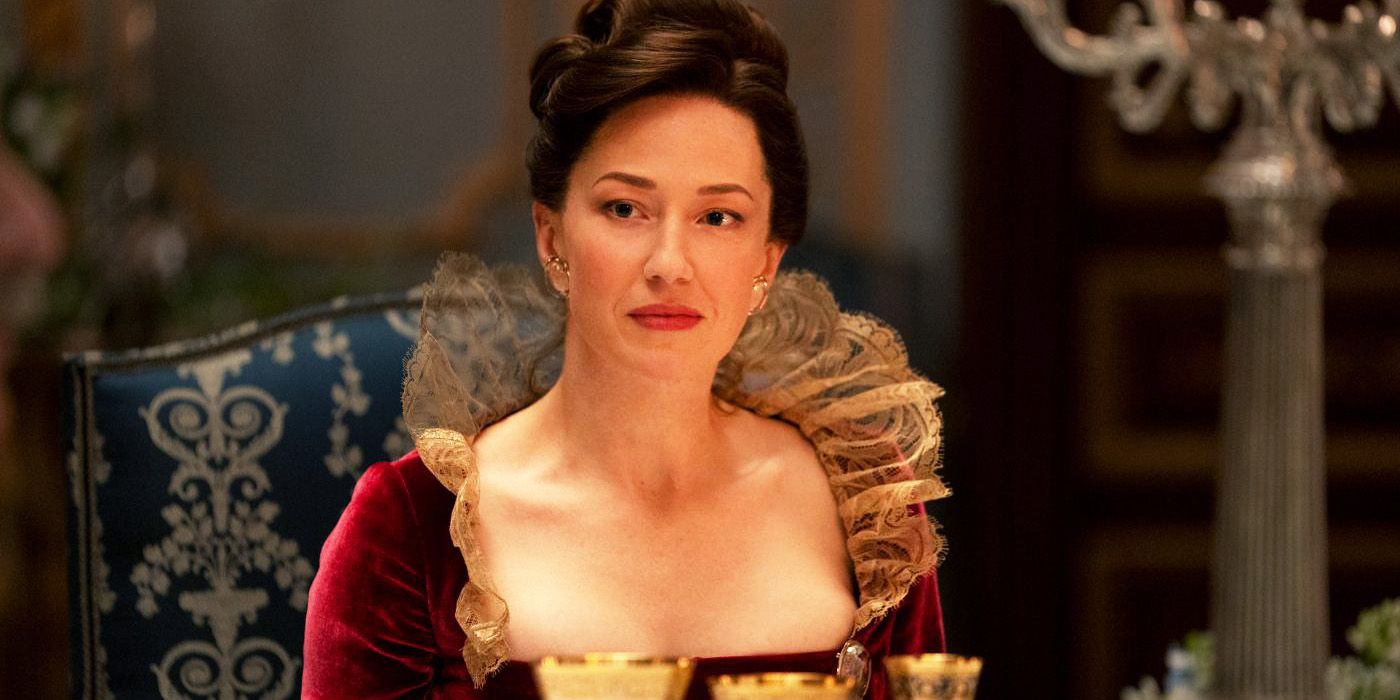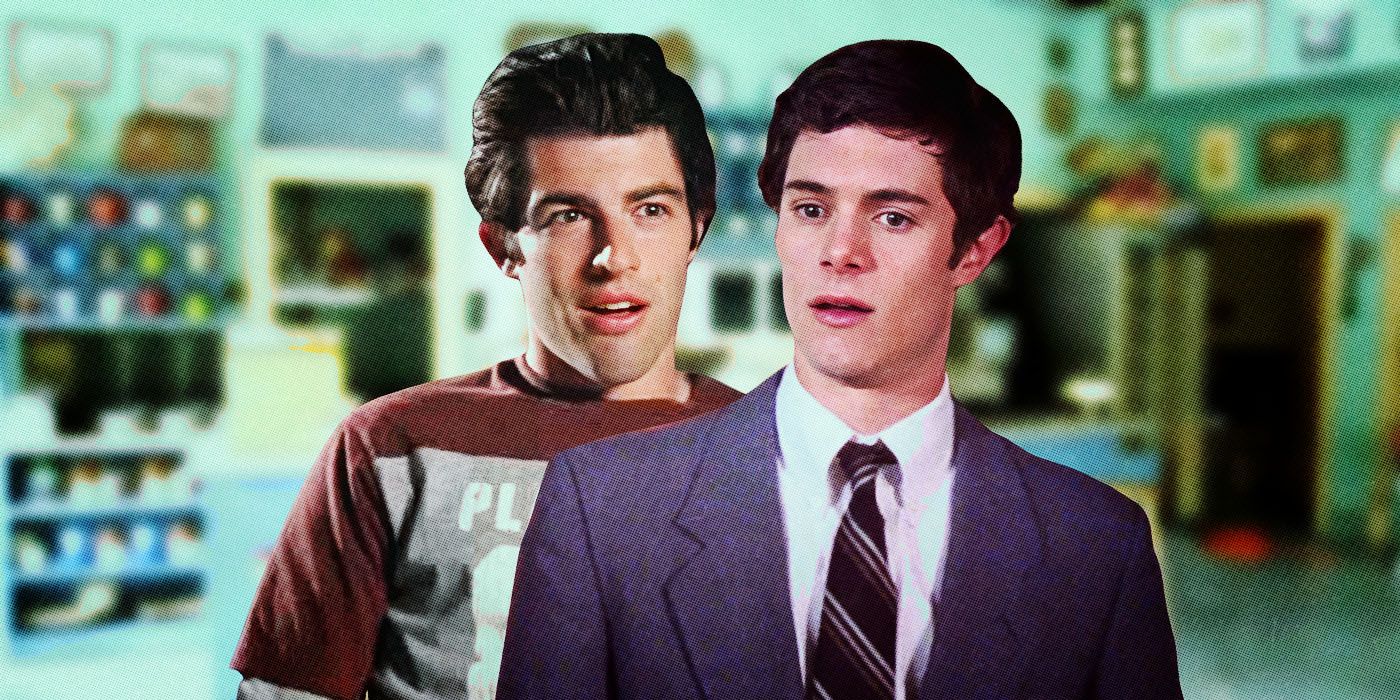The Big Picture
- Nimona changes the bittersweet ending of the graphic novel to a more hopeful one in the animated film adaptation.
- The film takes a more positive tone overall, emphasizing themes of hope, change, and dismantling harmful systems.
- The movie’s happy ending is a step in the right direction for queer representation, showing that queer people can have a better world and happy endings too.
Nimona is a miracle. The animated film, adapted from the graphic novel of the same name by creator ND Stevenson, spent years in troubled development, switching studios, and almost being killed by Disney before its triumphant Netflix premiere. The film changes quite a bit from the graphic novel, but in broad strokes it is quite similar. It’s the story of Nimona (Chloe Grace Moretz), a shapeshifter, who wants to become the sidekick of the kingdom’s newly anointed villain, Ballister Blackheart (Riz Ahmed). Together they bring the corruption of The Institution that has claimed to protect everyone to light. In the end, Nimona sacrifices herself to save the city that despised her, and Ballister’s name is cleared, just like in the book, but the film has shifted the tone quite a bit, and it changes the ending with it. The bittersweet original ending is swapped for one a bit more hopeful and the film is all the better for it.
Nimona
When a knight in a futuristic medieval world is framed for a crime he didn’t commit, the only one who can help him prove his innocence is Nimona — a mischievous teen who happens to be a shapeshifting creature he’s sworn to destroy.
- Release Date
- June 30, 2023
- Director
- Nick Bruno , Troy Quane
- Rating
- PG
- Runtime
- 101 minutes
‘Nimona’s Movie Ending Has a More Positive Tone
The original ending was kind of a downer. Not in a bad way, but one that might be harder to stomach now than it was back in 2015. Nimona the graphic novel is a pretty different version of this story. Its finale saw Nimona captured by The Institution while trying to save Ballister and being tortured to the point of kaiju-ing out, kind of like what we see in the film. But unlike in the film, Ballister does fully intend to fight Nimona if he must. He tries to get through to her, but the trust between them is broken. She’s killed the Director (Frances Conroy) and destroyed The Institution, but she’s lost her only friend, and in the end, Nimona, too, is destroyed. Kind of. She can’t die fully, but she disappears from Ballister’s life. Their relationship is, at least for now, far too broken. She’s still seen as a monster by the people, but knows at least that she is not seen as one by him. It’s an open ending, a bittersweet ending, and one that, while great, simply wouldn’t work as well for the movie.
The movie takes a much more positive tone overall. There’s hope underlying the whole story, mostly brought about by Ballister being much more optimistic in this version of the story. He hasn’t resigned himself to being a villain the way his book counterpart has. This leads to a few key changes, like the harsher contrast in Nimona and Ballister’s respective approaches to villainy, and more emphasis on how Nimona transforms Ballister’s worldview. The timeline is much more condensed, so there’s been less time for bitterness to set in for Ballister, both towards The Institution and Ambrosius (Eugene Lee Yang). All of this, as well as the PG rating that targets this film at a younger demographic, feels necessary to give us a more optimistic ending. People can change, people can forgive, and the systems that hurt us can be dismantled, even if we have to do it ourselves. Nimona needed help, and she needed someone to trust her as much as she trusted them. She couldn’t get that in the graphic novel, but she finally gets it here.

Netflix Did ‘Wish’ Better Than Disney With ‘Nimona’
Both movies cover conceptually similar territory, but ‘Nimona’ explores it all so much better.
In the new version of events, Nimona tries to end her own life. She shifts into a massive form that The Institution tries to take down, laying waste to the city in the process, and is only stopped when Ballister reaches out to her. He says, “I’m sorry,” and tells her that he sees her and that she is not alone. Everything crescendos here: the themes of queerness and love and acceptance. The idea of destroying harmful systems can be dismantled with our own hands and our own compassion. And the many changes made from book to screen culminate here when Nimona says she’s going to rewrite the story and shoots across the sky as an avenging phoenix. She still disappears, Ballister still loses her, but she’s not gone. Now Nimona is everywhere, the city loves her, and it’s not just Ballister who gets to see her for who she really is: it’s everyone. And instead of one bittersweet look across a crowd, Nimona comes back to Ballister in a dramatic and sparkling flourish, triumphant and awesome. Not every story needs a happy ending, but Nimona certainly deserved one.
‘Nimona’ Encourages Us To Question the System, Then Break It
The hopefulness of this film is something that extends beyond the changes. It’s in the themes, the plot beats, and even the music. This is one of the most thoroughly anti-establishment, smash-the-system films in recent memory and is especially remarkable for its PG rating. But how could it be any other way? Ballister tried his best to abide by the system, and he was betrayed simply for being perceived as a possible risk. The same goes for Nimona. All she ever wanted was a place to belong as herself, but being different made people treat her as dangerous. The system is not built for everyone, the film says. These institutions are built on arbitrary rules and even outright fabrications, as is the case with the “legend” of Gloreth being revised and twisted across centuries to suit The Institution’s narrative.
It’s quite radical for an animated film targeted at kids to point out an obvious villain and then say, “but the problem is bigger than that.” When Ballister thinks he needs to dispose of the director and keep The Institution everyone has put their faith in alive, he’s quickly shown how wrong he is to even think that. And more than that, Ballister still has so much room to grow. He says he sympathizes with Nimona, but he still says small-minded things and still carries unseen biases while being well-intentioned. And Nimona does not mind showing him just how wrong he is. Nimona, in its characters and themes, is advocating for constant improvement, change, and questioning of everything. Why should we blindly trust institutions that hurt us? What is a monster? Who decides what “normal” even is anyway? And it goes without saying these themes feel more relevant now than ever.
‘Nimona’s Happy Ending Is a Step in the Right Direction
It’s not like 2015 was a radically more accepting time for queer people or for social progress in general. But it was a time when we felt like progress was being made. Same-sex marriage was being legalized nationwide and progressive politics were on the rise. Nimona felt like a realistic depiction of what it’s like being queer in the world. But the world’s gotten a bit scarier for queer people. Transgender people in particular are facing a horrendous uptick in discrimination and outright violence. And rather than back away from the queer themes of the film, Nimona dials them up to eleven. Ballister and Ambrosius’s romance is one of the first things we see. Nimona herself is so trans-coded it’s impossible to miss. So what do they do with this radically queer story and a character who is constantly her own biggest advocate? They give her a happy ending.
Tragic stories are wonderful and certainly have their place. But it’s 2024, and another story of a queer person having to martyr themselves to earn acceptance is going to be more depressing than anything. Why must Nimona stay the monster of the story? Why must Nimona and Ballister’s relationship break entirely in order for his romance with Ambrosius to heal? Why can’t queer people live to see the better world they helped to make? Nimona wants us to know a better world is possible. That there is happiness and hope out there for the people society wants to paint as villains for being misunderstood. But the Nimonas and the Ballisters of the world also need to keep looking out for each other. It was because they had each other in the end that Nimona was able to transform from the grief-consumed dragon of the graphic novel’s climax to the avenging angel that literally broke down the walls that confined them for so long.
Nimona is available to stream on Netflix in the U.S.
Watch on Netflix




